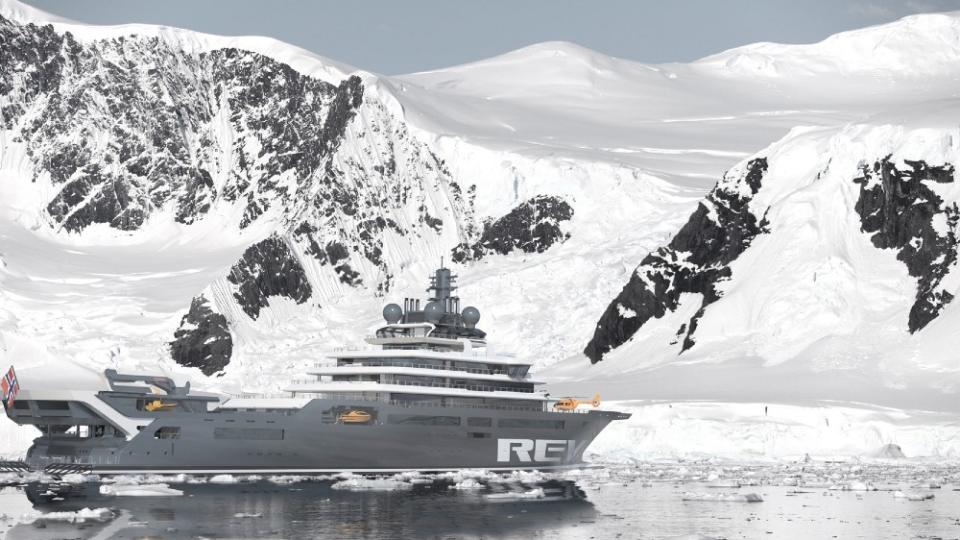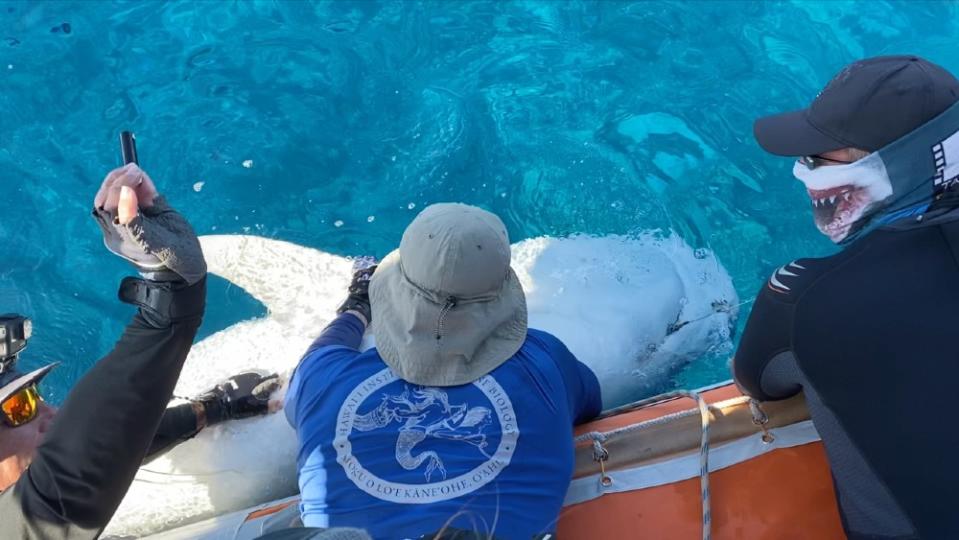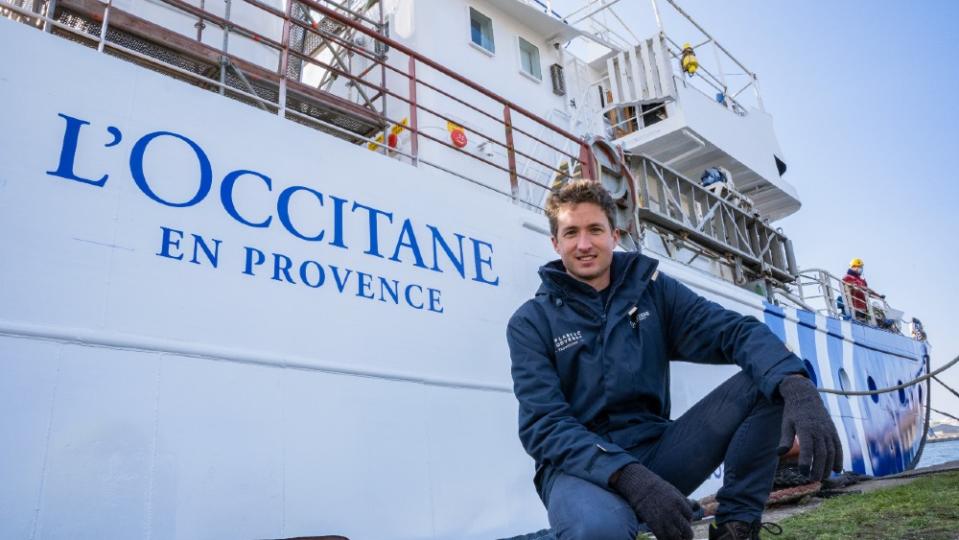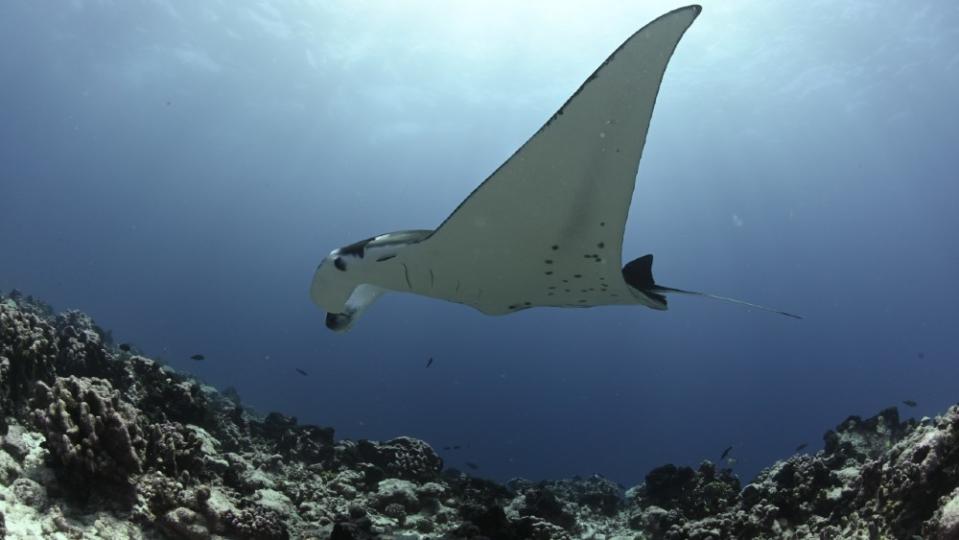These Superyachts Lead a Double Life as Floating Labs for Ocean Research

Dead tuna heads aren’t quite the fine-dining ingredients typically found in a superyacht galley, but during its South Pacific cruise last year, Seahawk had three freezer chests full of them.
As guests of the owners, marine researchers from universities in France and the USA had joined the pedigree Perini Navi sailing yacht for 10 days to track migration patterns of tiger sharks in the Tuamotus Archipelago in French Polynesia. Rather than serving up cocktails and canapés, Seahawk’s crew members were charged with loading up the tenders with the tuna heads and taking them to bait stations where receivers were placed to capture critical data on the near-threatened shark species.
The trend of yachts being loaned out to scientists is becoming more common these days as owners make good on promises of promoting sustainability via their vessels. Cruise lines Viking and Ponant have also jumped into the research game, creating luxury expedition vessels with labs that are now integral to their cruise protocols.

This trend is extending to owners designing superyachts that are hybrid research vessels. When Norwegian shipping magnate Kjell Inge Røkke’s REV Ocean launches in 2026 (the current estimated date of delivery), the 600-foot expedition yacht is expected be crowned the world’s largest superyacht. But it will be much more than that. Fully equipped with multiple labs for different disciplines, as well as advanced scientific equipment, the vessel will toggle between three modes: charter, research and expedition.
Click here to read the full article.
Other hybrids are already in the water. After a two-year rebuild at Damen that included the addition of research labs as well as a media center designed by film director James Cameron, OceanXplorer left on her maiden voyage in November 2020 to study the secrets of the Red Sea. The 285-foot vessel is the flagship of OceanX, an ocean exploration initiative founded by American businessmen Ray Dalio and his son, Mark.

Another, Plastic Odyssey, is eight months into a three-year world sail to tackle plastic pollution in some of the most impacted ocean zones. With French beauty brand L’Occitane en Provence as its principal sponsor, the 131-foot vessel is equipped with an R&D lab, recycling machines and a recycling demonstrator.
Then there are owners like one Europe-based entrepreneur, who has designed a new 170-foot explorer yacht, for personal enjoyment and scientific research. As the summer launch date approaches, the owner is in talks with Yachts for Science, a program that connects scientists, researchers and content creators with yacht owners and crew for possible collaborations. The boat will be offered up free of charge for scientific missions.
Asking not to be named, the owner’s vision, from the first sketches, was to design an ice-class vessel that combines comfort and practicality. Teak decking, for instance, is out. Dry labs, workshops, a diving compressor and special freezing capabilities are in.

Onboard will be two 29.5-foot tenders specifically made for exploration, as well as four cranes, each of which can lift up to four tonnes. The boat also has the potential to bring two containers of research equipment on the rear deck.
For Seahawk’s American owners, their 170-foot sailing yacht has been a way to travel the world while leaving a legacy of good behind. Since departing the Mediterranean in 2020, the yacht has hosted scientists studying migratory patterns of pelagic species such as sharks and mantas in the Galapagos and Mexico. They have also helped survey coral reefs in Fiji’s Lau Islands, along with driving multiple charitable initiatives.
Seahawk’s rotational captain, Stephen Edwards, acknowledges that the type of equipment scientists bring with them doesn’t always match with the “superyacht perfection” stereotype.

“We’re not a research vessel with science labs and special launching points,” Edwards told Robb Report. “We’re a standard sailboat, so sometimes accommodating the scientific equipment has required a bit of very non-superyacht-looking improvisation.”
But the tradeoff is the kind of work very few yacht owners and crew will ever experience. “We have video footage of our bosun holding the mouth of a tiger shark while somebody’s doing surgery on the other end,” says Edwards. “For the crew, this type of voyage is unique. They’re not going to see this in any other way.”
There is also the reward that comes from knowing their efforts have made a difference. One of Seahawk’s first missions was to find evidence of a shark swim-way between the Cocos Islands National Park in Costa Rica and the Galapagos Islands.

“The hypothesis is that these areas have always been linked together, but it was a matter for science groups to prove this in order to get governments to stop large fishing boats from parking themselves in the middle of this highway and just grabbing everything that swam past,” Edwards says.
Seahawk’s owner provided a platform for an expedition led by MigraMar, a leading authority in migratory species. “We got into it at a good time, thanks to our tagging work,” says Edwards. “It really put facts behind the hypothesis.” Subsequently, at the UN Climate Change Conference in late 2021, a new 24,000-square-mile marine reserve was defined by Ecuador to safeguard migratory species.
Considering that these voyages have coincided with travels Seahawk‘s owner had already planned, itineraries that combine yachts and science seem to be a win-win for everyone involved. “These missions benefit the crew, science and the environment,” says Edwards. “The concept is also very much part of the owner’s vernacular. He actually calls it his mission.”
Best of Robb Report

